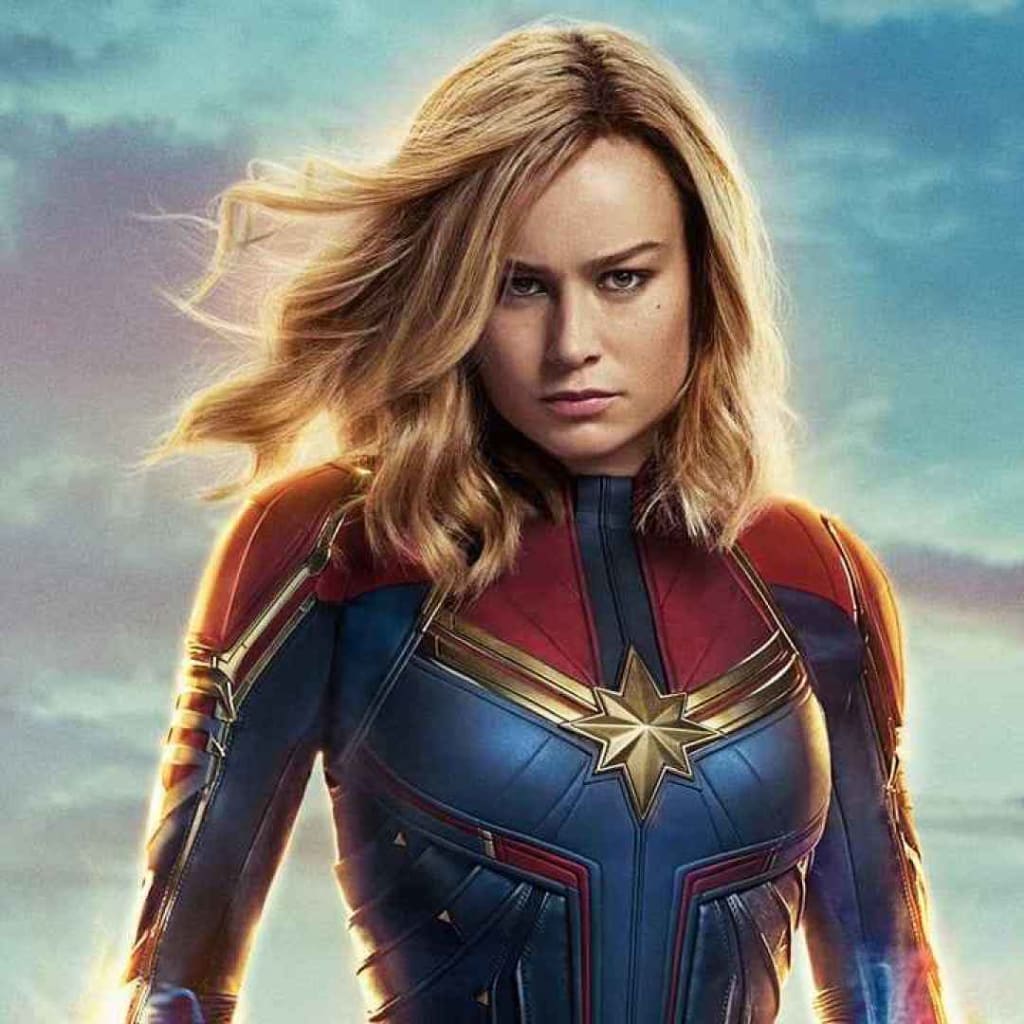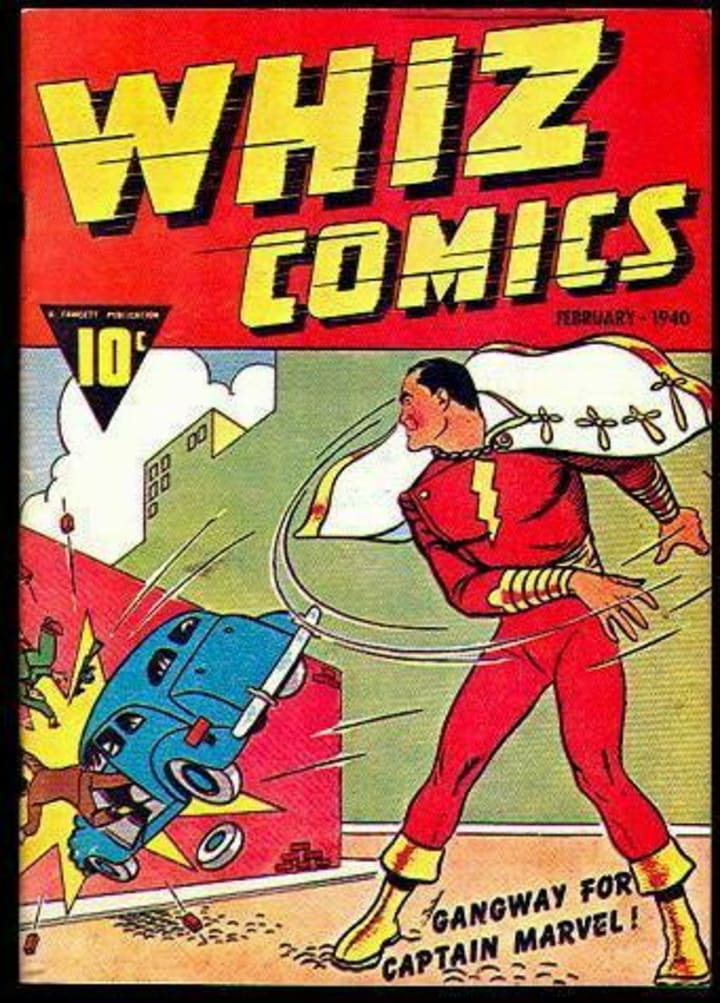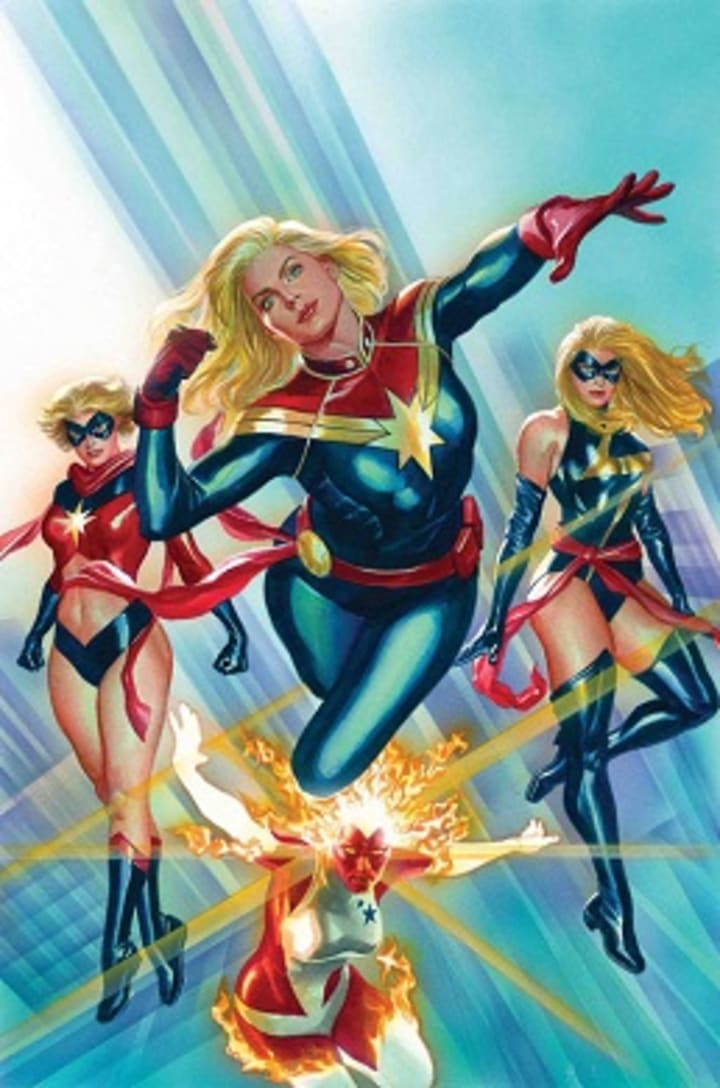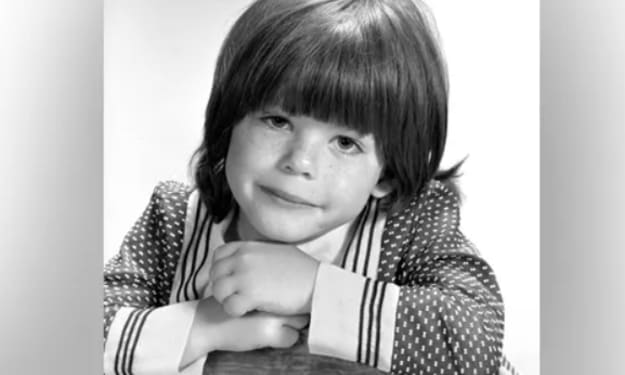
Captain Marvel has not always been a woman, or even a Marvel character or a DC character. Captain Marvel has been around for more than 70 years, and the story behind the name and the characters is as interesting as some of the stories they're in.
Fawcett Comics

The very first Captain Marvel debuted in 1939, not at DC or Marvel, but in "Whiz Comics" #2, published by Fawcett Comics. There were several comics publishers back then, and while Superman debuted at DC with Action Comics #1 in 1938, Captain Marvel became the most popular hero of the 1940s, outselling all others. He was also the first super-hero to make it to the big screen, starring in a movie serial in 1941.
While their origins were different, the abilities of Superman and Captain Marvel were similar, and DC sued Fawcett for copyright infringement, causing Fawcett to cease publication of comics featuring the character in 1953. Fawcett continued publishing other comics, but in 1972 sold the licensing to the character to DC, allowing DC to publish the first new Captain Marvel stories in nearly 20 years. This also gave DC the opportunity to have stories featuring both Superman and Captain Marvel for the first time.

Eventually DC gained the rights to all of the Fawcett characters, and Fawcett went out of business in 1980.
You may note, however, that the cover of the comic above doesn't say, "Captain Marvel," it says "Shazam!," which is the name of the character from the recent movie and more recent comic series. There's a reason for that, which involves some quick work from DC's rivals at Marvel Comics
Captain Mar-vell

Because Fawcett had ceased publication of any Captain Marvel comics in 1953, the trademark of the name lapsed, leaving it free to use. In 1966, M.F. Enterprises took advantage of this, publishing just a few issues of a title about an android named Captain Marvel. However, since the name of their company was in the title, Marvel Comics sued M.F. Enterprises, which forced them to stop publication. Marvel settled with the company, then secured the trademark rights to the Captain Marvel name, debuting their own character (seen above) in 1967. Marvel's character was a member of an alien race, the Kree, who was sent to Earth as a spy, but who came to identify with humanity and served as their protector.
The series wasn't particularly popular, nor was the hero's look, and eventually he was revamped, given a new look that has remained a classic.

Writer Roy Thomas also made a key change with the Mar-Vell character that harkened back to the original Captain Marvel. Thomas was a fan of the original, as well as all of the classic characters from the 40s, and he decided to give Captain Marvel a pair of "nega-bands" - wristbands that enabled him to fly, survive in space, and project energy. They were similarly bonded to Rick Jones, the teen sidekick of the Hulk, Captain America, and the Avengers. When Jones slammed the wristbands together, Captain Marvel was summoned from the famed Negative Zone. When Marvel slammed the wristbands together himself, he would go to the Negative Zone and Rick Jones would reappear.
In this way, Thomas replicated what he considered the most endearing trait of the original hero, which made him even more popular than Superman. While Superman had a civilian identity of ho-hum grownup Clark Kent, Captain Marvel was in reality Billy Batson, a young orphan, who was transformed into Captain Marvel when he said the magic word "Shazam!"
With Marvel owning the name, but DC eventually owning the rights to the original character, DC was able to reprint the original stories, and new stories, but the name "Captain Marvel" could not appear on the cover of any of the comics or any licensed products or media. There, the name used was simply "Shazam." That continued to be the situation for decades, until DC finally gave up referring to the character as Captain Marvel at all. Captain Marvel and the related heroes Mary Marvel and Captain Marvel, Jr. became Shazam, Mary Shazam, and Freddy Shazam.

Meanwhile, in the 70s, Captain Mar-Vell briefly became popular under the direction writer/artist Jim Starlin, creator of Marvel's cosmic villain Thanos. Starlin gave the title more of a cosmic feel, but the title still lost steam. Wanting to give the hero a definitive death, not just a standard comic book death that characters return from all the time, Starlin wrote and illustrated one of the first graphic novel, "The Death of Captain Marvel," in which Mar-Vell dies from cancer, contracted from a toxic agent he was exposed to at the end of his ongoing series. Aside from brief appearances or flashbacks, Mar-Vell has remained dead ever since.
Monica Rambeau
Mar-Vell was dead, but Marvel Comics still had the rights to the name, which meant there had to be appearances from a character, any character, named Captain Marvel. Thus the second Captain Marvel to appear at Marvel Comics, Monica Rambeau, was born.
First appearing in an issue of Amazing Spider-Man, the new Captain Marvel was a police officer in New Orleans who, in trying to prevent a super-weapon from being used, was exposed to extra-dimensional energy. This gave her the ability to manipulate energy, fly, and transform her body into any kind of energy. She joined and eventually led the Avengers for a time, but never had her own series. Eventually she lost her powers while on a mission with the Avengers and retired. Regaining her powers later, she adopted other names, such as Photon and Spectrum. Her character will appear in the film "Captain Marvel 2."
Mar-Vell's children
Still needing a character in print to retain the trademarked Captain Marvel name, Marvel Comics introduced another new character. In an issue of "Silver Surfer," one of the Eternals (the group from the new MCU film) impregnates herself with Mar-Vell's genetic material and she gives birth to a son, whom she names Genis Vell. Hiding on a remote planet away from Captain Marvel's enemies, the boy's mother artificially ages him and for a time he takes the name Legacy and an awful costume indicative of the horror that was comics in the 90s. Later, he adopts his father's title of Captain Marvel, and like his father, a much cooler look.

He also inherits his father's nega-bands, and becomes bonded with Rick Jones. The new Captain Marvel then has a new series, which goes on for a time, but is eventually cancelled, and the new Captain, like the old one, dies, this time killed in battle.
Genis' mother impregnated herself with another child from Mar-Vell's genetics and had a daughter, Phyla-Vell, who originally went by the name Quasar, working alongside the Guardians of the Galaxy, until she adopted the title of Captain Marvel after the death of her brother.

This version of Captain Marvel was then killed by Thanos, fighting alongside the Guardians of the Galaxy.
Carol Danvers
When Captain Mar-Vell was still alive, first active on Earth, he worked as a scientist at an American Air Force base, where he met Air Force Colonel Carol Danvers. At one point a device made by the alien race the Kree exploded, severely injuring Danvers, though Mar-Vell saved her from being killed. This explosion gave her super-powers, and spliced her DNA with Mar-Vell's Kree DNA. When she recovered, she launched into her own series in the 1970s, under the name Ms. Marvel.

Like Captain Marvel, Ms. Marvel got a new, better look, and joined the Avengers.

While an Avenger, she and the team were attacked by a new villain, the mutant Rogue, who used her mutant ability to temporarily steal the abilities of others on Ms. Marvel, except in a twist of fate, it was permanent. Ms. Marvel lost her abilities and went into a coma. Rogue kept her abilities and Danvers' memories, which gave her a fragile grip on sanity. She sought help from Professor X of the X-Men, who also helped Danvers regain her memories, but not her powers. Rogue then joined the X-Men, but bitter feelings between she and Danvers remained for years to come.
While on a mission in space with her friends the X-Men, Danvers is experimented on by the alien race The Brood, unleashing new, increased abilities in her, including the ability to tap into stars known as white holes. Now using the name Binary, Danvers has a number of new adventures before eventually going back to her second Ms. Marvel uniform and rejoining the Avengers, where her friend Beast suggests she change her name to something befitting her history in the Air Force as well as her history as a crime fighter. Thus she takes the name Warbird, but after several years and a new "Ms. Marvel" title, she reclaims her old code name.

Eventually, in 2012, after Monica Rabeau and Mar-Vell's children have all used the name and either moved on or died, Captain America tells Danvers she has earned the right to use the name Captain Marvel, and it would honor Mar-Vell if she used it. Danvers says she never felt worthy, but Captain America insists she is. Donning a new high-tech uniform designed by Tony Stark, Danvers then stars in a new Captain Marvel series, while a younger hero, Marvel's first Indian-American hero to have his or her own title, launches in a new Ms. Marvel comic, inspired by her hero, the original Ms. Marvel.
About the Creator
Gene Lass
Gene Lass is a professional writer, writing and editing numerous books of non-fiction, poetry, and fiction. Several have been Top 100 Amazon Best Sellers. His short story, “Fence Sitter” was nominated for Best of the Net 2020.






Comments
There are no comments for this story
Be the first to respond and start the conversation.